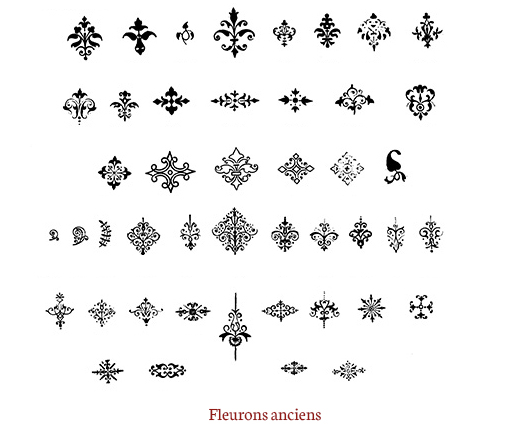
These are some of the ornaments that come with the typeface Nelson. They are mostly nature icons such as flowers and leaves, but there are also several glyphs that are nice for borders. I found this typeface and the ornaments on Typekit, and I was drawn to these because I like how they look like ink stamps (with the bleeding, rugged edges). I think these would be nice for stationery, especially invitations, greeting cards, and maybe even business cards if you want to add a rustic nature vibe.










